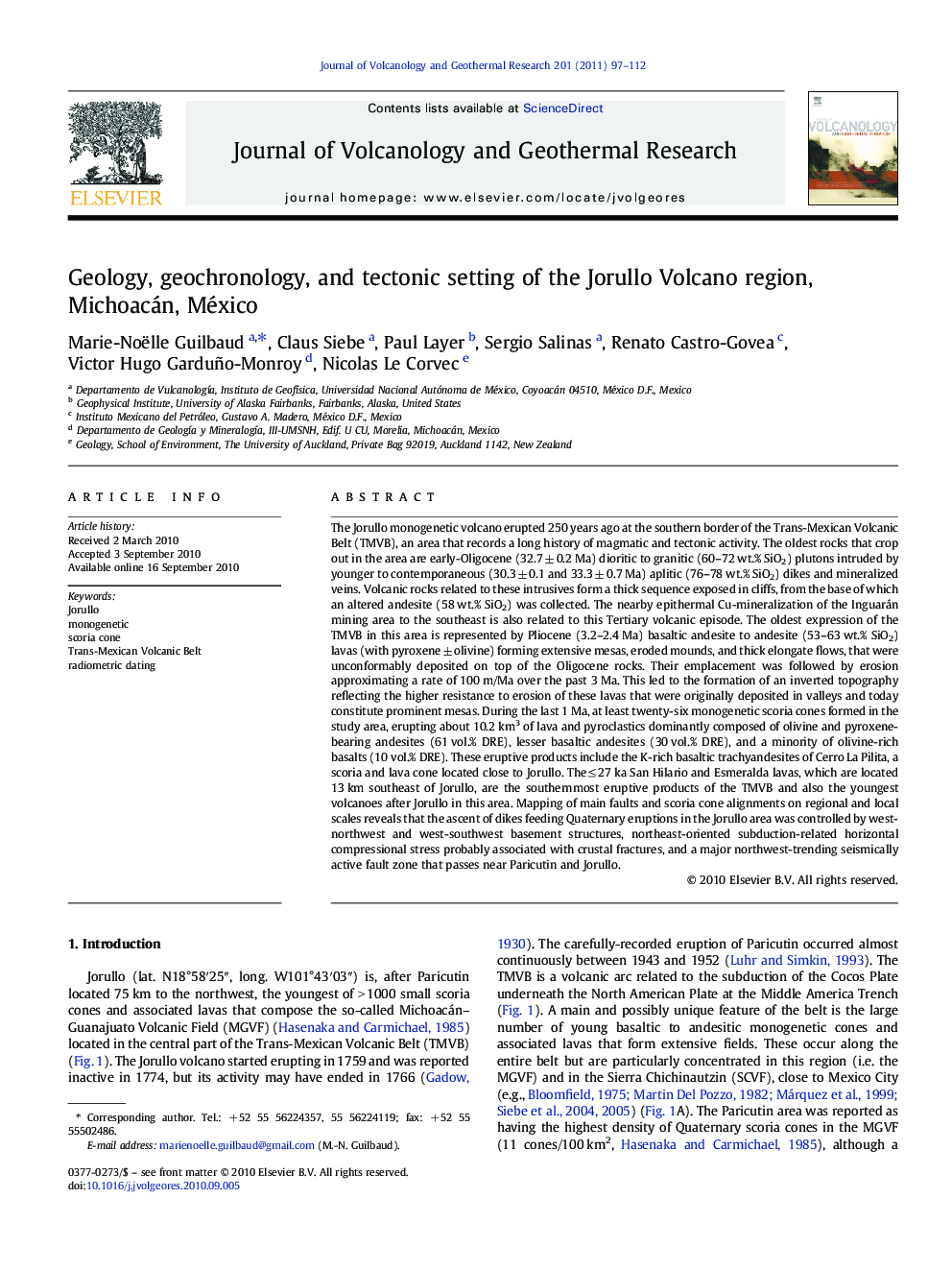| Article ID | Journal | Published Year | Pages | File Type |
|---|---|---|---|---|
| 4714043 | Journal of Volcanology and Geothermal Research | 2011 | 16 Pages |
The Jorullo monogenetic volcano erupted 250 years ago at the southern border of the Trans-Mexican Volcanic Belt (TMVB), an area that records a long history of magmatic and tectonic activity. The oldest rocks that crop out in the area are early-Oligocene (32.7 ± 0.2 Ma) dioritic to granitic (60–72 wt.% SiO2) plutons intruded by younger to contemporaneous (30.3 ± 0.1 and 33.3 ± 0.7 Ma) aplitic (76–78 wt.% SiO2) dikes and mineralized veins. Volcanic rocks related to these intrusives form a thick sequence exposed in cliffs, from the base of which an altered andesite (58 wt.% SiO2) was collected. The nearby epithermal Cu-mineralization of the Inguarán mining area to the southeast is also related to this Tertiary volcanic episode. The oldest expression of the TMVB in this area is represented by Pliocene (3.2–2.4 Ma) basaltic andesite to andesite (53–63 wt.% SiO2) lavas (with pyroxene ± olivine) forming extensive mesas, eroded mounds, and thick elongate flows, that were unconformably deposited on top of the Oligocene rocks. Their emplacement was followed by erosion approximating a rate of 100 m/Ma over the past 3 Ma. This led to the formation of an inverted topography reflecting the higher resistance to erosion of these lavas that were originally deposited in valleys and today constitute prominent mesas. During the last 1 Ma, at least twenty-six monogenetic scoria cones formed in the study area, erupting about 10.2 km3 of lava and pyroclastics dominantly composed of olivine and pyroxene-bearing andesites (61 vol.% DRE), lesser basaltic andesites (30 vol.% DRE), and a minority of olivine-rich basalts (10 vol.% DRE). These eruptive products include the K-rich basaltic trachyandesites of Cerro La Pilita, a scoria and lava cone located close to Jorullo. The ≤ 27 ka San Hilario and Esmeralda lavas, which are located 13 km southeast of Jorullo, are the southernmost eruptive products of the TMVB and also the youngest volcanoes after Jorullo in this area. Mapping of main faults and scoria cone alignments on regional and local scales reveals that the ascent of dikes feeding Quaternary eruptions in the Jorullo area was controlled by west-northwest and west-southwest basement structures, northeast-oriented subduction-related horizontal compressional stress probably associated with crustal fractures, and a major northwest-trending seismically active fault zone that passes near Paricutin and Jorullo.
Research Highlights► Oldest rocks are strongly-faulted Eocene volcanic sequence and Oligocene plutons. ► First TMVB products are voluminous Pliocene andesitic lavas forming elevated mesas. ► > 26 monogenetic eruptions of 10.2 km3 of mainly-andesitic magma during last 1 Ma. ► Control by pre-existing structures, seismically-active faults and regional stress.
